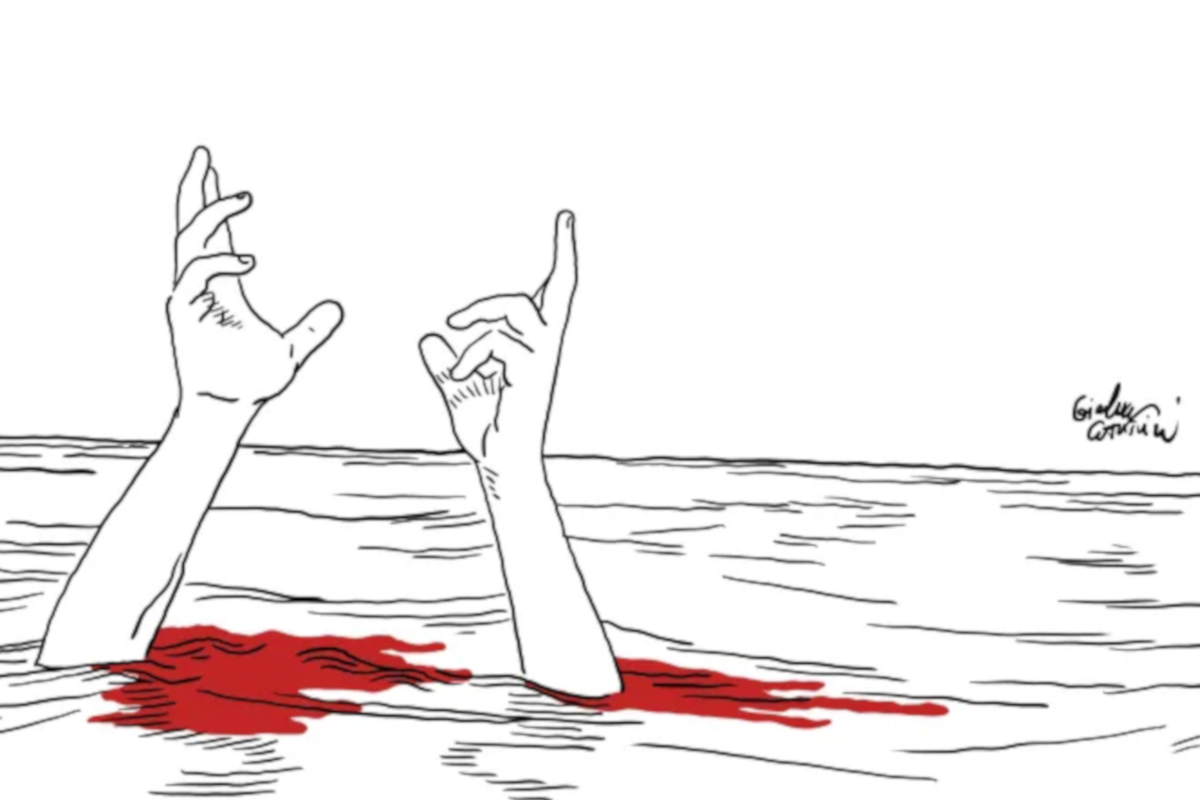Unaccompanied and separated children: patterns of child migration are changing at the southern Spanish border
Topic
Country/Region
13 February 2023
Since the early 1990s thousands of "unaccompanied and separated children" have arrived on Spanish territory. The authorities have frequently violated their rights. Policy changes and other events have led to migration patterns shifting over the years. A debate is needed over the facilities and care provided for child migrants, who at the moment are often housed in large facilities that do not meet their needs or uphold their rights.
Support our work: become a Friend of Statewatch from as little as £1/€1 per month.
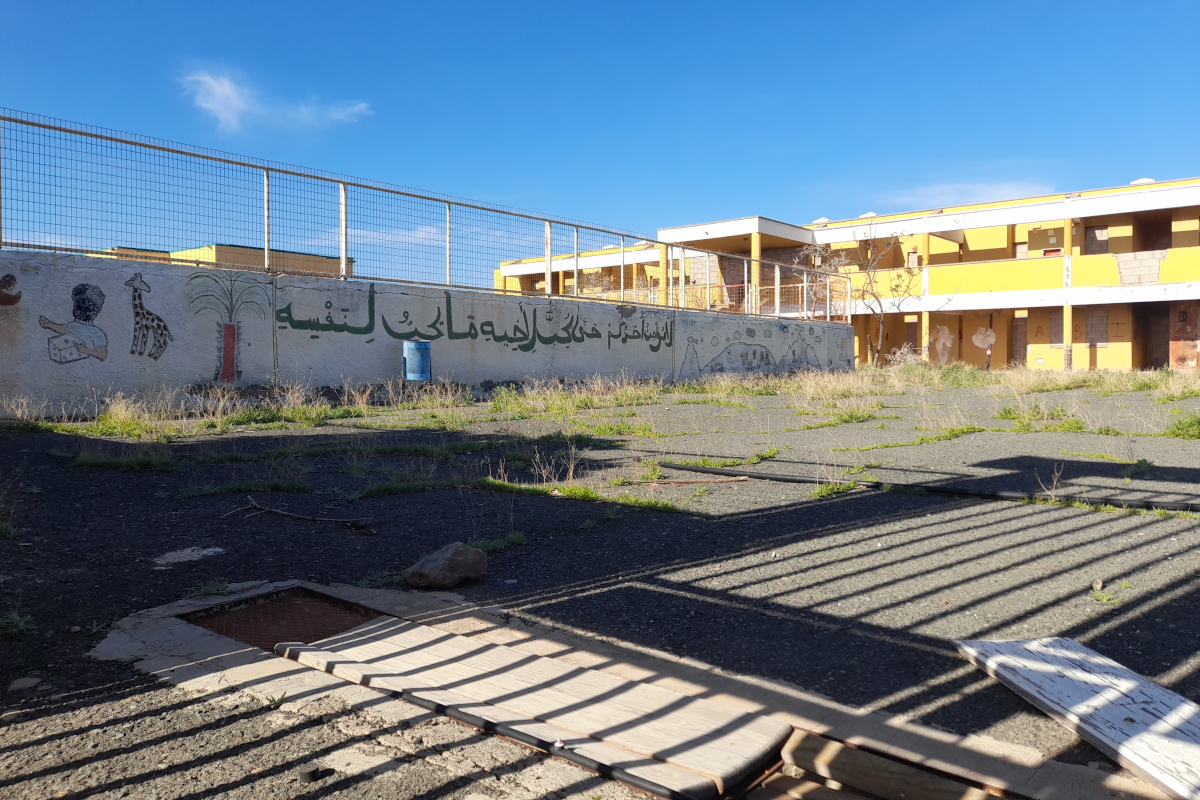
Image: A former macro-reception centre for unaccompanied and separated children in Arinaga, Gran Canaria. It was used during the Cayuco Crisis but was abandoned some years ago. Source: Lorena Gazzotti
Lorena Gazzotti, Lucy Cavendish College & CRASSH, University of Cambridge
Since the early 1990s, cities and regions in southern Spain have witnessed the arrival of thousands of children and teenagers crossing the border without a responsible adult. Legally framed as “unaccompanied and separated children”, this group is far from homogenous: it includes teenagers who moved abroad as part of a family strategy of social mobility, young people who left home against the wishes of their family and who are now estranged from them, as well as younger children who cross with the help of a relative or someone in the family network. The length and types of journey that unaccompanied and separated children undertake prior to arriving to Spain also vary: from years of stopovers across the African continent in the case of adolescents from Central and West Africa, to a few days in the case of young people who reach Europe though the arranged support of family networks.
Over the past 30 years, the Spanish enclaves of Ceuta and Melilla, together with the southern Spanish region of Andalusia, emerged as the main areas of first reception for migrant children in Spain. This was partly due to a question of geographical proximity to the border: Ceuta and Melilla, in fact, share a land frontier with Morocco. Until March 2020 the border was relatively permeable, as Moroccans living in the nearby provinces of Tétouan (for Ceuta) and Nador (Melilla) could cross into the enclaves during the day without a visa. The west coasts of Andalusia are also close to Morocco – the Gibraltar Strait being only 14km wide at its narrowest. The Canary Islands briefly became an important reception point not only for unaccompanied and separated children, but for migration writ large, between 2005 and 2007, during the so-called “cayuco crisis” (cayuco being a kind of fishing boat that West African people use to make the crossing). However, the implementation of further migration monitoring mechanisms over 2007 and 2008 sealed off the route to the Canary Islands.[1] After 2008, Ceuta, Melilla and Andalusia once again became the main routes for child migration at Spain’s southern border. Human rights bodies have raised regular criticisms over the years regarding the poor treatment of unaccompanied and separated children by state authorities, particularly in Ceuta and Melilla.
The outbreak of the COVID-19 pandemic, however, substantially changed the dynamics and patterns of child migration at Spain’s southern border. Since 2018, in fact, an increase of border controls in Northern Morocco and across the Gibraltar Strait had already made crossing through the Western Mediterranean more challenging. In March 2020, the land borders dividing Ceuta and Melilla from Morocco were closed in response to infection control measures. The imposition of lockdowns and curfews in early 2020 decidedly shifted migration flows towards southern Morocco and the Western Sahara, with the Canary Islands as a destination point.
Melilla
Since the late 1990s, Melilla has been a crucial node of child mobility at the southern Spanish border. Situated in the east of the Rif region, less than 100km away from the Algerian border, Melilla has a history of conflictual, colonial, yet mundane exchange and mobility with the surrounding territory. Child mobility forms part of that landscape. After acquiring responsibilities for child protection in 1997, the Autonomous City of Melilla developed a network of child protection centres which, by 2004, had stabilized to include three facilities – one for unaccompanied and separated boys, one for girls, and one hosting girls and young boys. However, the existing reception facilities always struggled to accommodate the number of children under the guardianship of local authorities. Whereas in 1999 Melilla hosted around 70 migrant children, the number had increased to 331 in 2004, and to 670 by the end of 2018. The poor conditions of reception centres – especially of the Fuerte La Purisima – have regularly been criticized by human rights watchdogs,[2] as were repeated episodes of ill treatment of migrant children at the hand of local authorities.[3]
This situation underwent significant change when COVID-19 struck. During the acute phase of the pandemic, local authorities tried to reduce overcrowding and infection risk in residential centres by converting other facilities into temporary emergency centres – first a campsite, and then a former military fort.[4] Unaccompanied and separated teenagers coming of age were no longer eligible for a place in a child protection centre and were directed to an emergency reception centre opened in the premises of the city’s bullring. The living conditions in the centre were also harshly criticized by human rights bodies.[5] This situation of overcrowding and crisis changed over the course of 2021. In summer 2020, in fact, Spain’s Supreme Court issued a sentence upholding the right of asylum seekers who had lodged a claim in Ceuta and Melilla to freedom of movement across the entire territory of the country, although it was not really implemented until spring 2021. Once COVID19-related travel restrictions were eased, asylum seekers started being able to travel to mainland Spain. More and more people that were ‘stuck’ in the city – including young adults who had been in the care system as minors – started applying for asylum as a way to leave the enclave and reach mainland Spain. In the meantime, the border with Morocco remained closed, thus drastically limiting the capacity of teenagers to migrate into the city. With potential routes to the city drastically reduced, the total number of unaccompanied and separated minors hosted in Melilla decreased to 441 by the end of 2021. On 17 May 2022, the border reopened, but only for European passport holders and Moroccans who held a Schengen visa or a Spanish residency permit. The number of unaccompanied minors in the city has thus decreased substantially, as has the overall number of migrant people reaching the city.
Ceuta
Like Melilla, Ceuta has also figured prominently in the Spanish child migratory landscape over the past 30 years. Unlike its twin enclave, though, Ceuta is more tightly integrated in the urban network of Northern Morocco: it is close to Tétouan and Tangier, and its port forms a logistic triangle together with the port of Tanger-Med and Tangier Ville. These three ports also constitute departure points for migrant children trying to reach mainland Spain by hiding under lorries. For the best part of the past 25 years, Ceuta has only had one residential facility for unaccompanied minors. The local child protection system has attracted the same criticisms raised in Melilla: poor reception conditions, evidence of violence against unaccompanied and separate children, repeated failure to provide many of them with documentation. Like Melilla, Ceuta also registered a high number of migrant children living on the street. In recent years, more reception facilities have been opened, namely in response to the border incidents of May 2021 (see below).
Ceuta’s broader migratory landscape was also completely transformed by the closure of the land border with Morocco in March 2020. The halt of cross-border circulation paralyzed not only activities such as cross-border trade (porteo, in Spanish), but also drastically reduced avenues for child migration into the city. The border incidents of May 2021 constituted an exception to these limitations on mobility. Between 17 and 18 May 2021, over 9000 people, including 1500 minors, crossed from Morocco to the Spanish enclave, They were able to do so due to the Moroccan authorities considerably relaxing border controls as part of a Spanish-Moroccan diplomatic spat: Spain, in fact, had decided to admit Brahim Ghali, the leader of the Polisario Front, into Spanish territory under humanitarian grounds to receive medical care.[6] In the days and months following the border incident, Spanish authorities tried to repatriate both adults and minors who had crossed in May 2021. In particular, in August 2021, local authorities in Ceuta started returning Moroccan minors to Morocco without due procedure,[7] although the returns were paralyzed through strategic litigation triggered by civil society organisations.[8] In 2022, Ceuta managed to negotiate the transfer of 60 unaccompanied and separated children to other autonomous communities in mainland Spain, with a further 30 planned to be redistributed in 2023.[9]
As in the case of Melilla, Ceuta’s land border with Morocco reopened on 17 May 2022, but only for European passport holders and Moroccan citizens with travel documents and residence permits valid in the Schengen area. Moroccans living in the nearby province of Tétouan are still not allowed to cross into Ceuta with their passport, as was the case before March 2020. It is currently unclear what this change will mean for the future of child mobility across the two enclaves. At the end of 2021, Ceuta recorded 921 unaccompanied and separated children under the state’s guardianship. It was therefore the fourth highest recipient of migrant children moving alone after the Canary Islands, Andalusia, and Catalonia.
Canary Islands
Unlike Ceuta and Melilla, the Canary Islands have not constantly been a migration hotspot. This is because the archipelago is actually quite far away from the nearest African coast – 100km west of the Western Sahara, and 1000km north of Senegal. The distance and the strong currents make the journey particularly dangerous – the “Atlantic Route” is the migration avenue where the most people die on their way to Europe.[10] Historically, the Atlantic route has come to prominence only in situations where border controls and other exceptional circumstances sealed off other pathways. This was the case during the so-called cayuco crisis in 2006, when heightened border controls across the Gibraltar Strait redirected migration flows towards the Canary Islands. In 2006 alone, over 31,000 people arrived on board fishing boats (cayucos), including 900 unaccompanied and separated children. Between 2006 and 2009, local authorities in the Canary Islands accommodated over 2700 unaccompanied and separated children in their residential facilities.[11] At the time, local authorities opened four different emergency reception centres to accommodate migrant children under their guardianship. These large-scale facilities, however, ended up being used for the long term. Both in 2007 and then again in 2010, Human Rights Watch raised concerns about the living conditions of migrant children hosted in these premises.[12] Local authorities in the Canary Islands also advocated for the transfer of unaccompanied and separated children to other Autonomous Communities to cope with the lack of capacity of regional child protection services. By early 2010, over 500 migrant children had been transferred to other regions in Spain.[13]
Spain and the EU subsequently strengthened border control measures that sealed off the Atlantic Route: by 2010, the number of arrivals had decreased to 200 people per year, and the numbers remained below 3000 people per year until 2019. The increase of surveillance in the Western Mediterranean route since 2018 and the announcement of lockdowns in early 2020 once again redirected flows towards the Atlantic, with over 23,000 and 22,500 people arriving in the Canary Islands in 2020 and 2021 respectively. Between 2019 and 31 May 2021, over 3800 unaccompanied and separated children had arrived on the archipelago.[14] By December 2021, the Canary Islands was acting as a guardian for 2399 unaccompanied and separated children. As in 2006, local authorities struggled to cope with the increase in the number of children under their care with the existing infrastructure, which could accommodate only 600 unaccompanied and separated children.[15]
Two parallel strategies were pursued. On the one hand, new emergency protection facilities were opened. The expansion of the child protection infrastructure of the archipelago was obtained through the opening of 43 emergency facilities on top of the already-existing centres. Many of the additional residential places were obtained by converting former tourist facilities. Around 10 such emergency facilities were macro-centres with capacity to host between 100 and 200 children.
On the other hand, the Canary Islands government lobbied other Spanish regions to activate a system of redistribution of unaccompanied and separated children. The initially proved complex, as transfers were difficult to organize due to the COVID-19 pandemic. By July 2021, only 132 unaccompanied and separated children had been transferred to the mainland.[16] In 2022, though, the Canary Islands obtained the green light to transfer 342 children to mainland Spain, with a further 340 planned to be redistributed in 2023.[17]
UNICEF has pointed to the lack of resources and a prompt response plan as undermining respect for the rights of unaccompanied and separated children in the archipelago. Particular concerns have been raised with regards to the length of age assessment procedures, the presence of children in centres for adults and the right to education, amongst other issues. Recently, civil society organisations have also rung the alarm about the situation of young adults who lived in the care system as unaccompanied minors care-experienced foreign teenagers. The archipelago, in fact, offers very limited places in facilities for the transition to adult life. As unaccompanied and separated children come of age and have to leave child protection facilities, many of them end up on the street.[18]
Conclusion
Over the past three years, the geographical patterns of child mobility at the Spanish-Moroccan border have greatly changed. The Canary Islands and, since May 2021, Ceuta have become the focal point of migration patterns, with local infrastructure not having the necessary capacity to adequately host all of unaccompanied and separated minors under the guardianship of state authorities. Particularly concerning is the fact that in Ceuta, local authorities have tried to return unaccompanied children back to Morocco without due procedure as a way to manage increased numbers. It is currently unclear whether the partial reopening of the land borders between the two Spanish enclaves and Morocco amounts to a permanent restructuring of border arrangements. If so, it is likely that child migration to Ceuta and Melilla will considerably decrease over the next few years, with the Canary Islands remaining the main node for child mobility at the southern Spanish border. If that were to become the case, then a debate would be needed regarding residential infrastructure for unaccompanied and separated children in the two enclaves, which is currently based on macro-centres for hosting large numbers of children. Macro-centres are not suitable to ensure adequate care, and reduced rates of arrivals would not justify their existence any longer. Shifting to a model of smaller residential centres in both cities might well be a possibility to explore.
Notes
[1] ‘Unwanted sea migrants across the EU border: The Canary Islands’, Vives, Luna, Political Geography, Volume 61, November 2017, Pages 181-192
[2] ‘CALLEJÓN SIN SALIDA: Abusos cometidos por las autoridades españolas y marroquíes contra niños migrantes’, Human Rights Watch, 2002, https://www.hrw.org/legacy/spanish/informes/2002/spnmorc0502sp.pdf
[3] ‘De niños en peligro a niños peligrosos: una visión sobre la situación actual de los menores extranjeros no acompañados en Melilla’, Harraga Melilla, 2016, https://www.observatoriodelainfancia.es/oia/esp/documentos_ficha.aspx?id=5382
[4] ‘La Ciudad utilizará «la zona de confinamiento» del Fuerte de Rostrogordo para acoger a 20 menores más y llegar a los 200’, COPE Melilla, 28 May 2020, http://copemelilla.com/actualidad/la-ciudad-utilizara-la-zona-de-confinamiento-del-fuerte-de-rostrogordo-para-acoger-a-20-menores-mas-y-llegar-a-los-200/74966
[5] ‘Varias ONG de Melilla denuncian la gestión de la acogida de personas durante el estado de alarma’, Servicio Jesuita a Migrantes, 4 June 2020, https://sjme.org/coms/varias-ong-de-melilla-denuncian-la-gestion-de-la-acogida-de-personas-durante-el-estado-de-alarma/
[6] ‘Commission, French government hope Morocco will return to being Europe's border guard’, Statewatch, 20 May 2021, https://www.statewatch.org/news/2021/may/commission-french-government-hope-morocco-will-return-to-being-europe-s-border-guard/
[7] ‘Las repatriaciones del Ministerio del Interior paralizadas por la actuación de las ONGs en favor de la infancia’, Fundacion Raices, 2021, https://www.fundacionraices.org/wp-content/uploads/2021/08/NP-JUZGADO-PARALIZA-CAUTELARMENTE-REPATRIACIONdocx-1.pdf
[8] ‘ESPAÑA VULNERÓ LOS DERECHOS FUNDAMENTALES DE LOS NIÑOS REPATRIADOS A
MARRUECOS EN AGOSTO DE 2021’, Fundacion Raices, 2022, https://www.fundacionraices.org/wp-content/uploads/2022/06/NP-Sentencia-del-TSJ-repatriaciones-de-menores-en-Ceuta.docx.pdf
[9] ‘Acuerdan trasladar a la Península a 400 menores no acompañados de Ceuta y Canarias este año’, RTVC, 27 July 2022, https://rtvc.es/trasladaran-a-la-peninsula-este-ano-a-400-menores-de-canarias-y-ceuta/
[10] ‘Ruta Canaria’, Caminando Fronteras, n.d., https://caminandofronteras.org/rutas/ruta-canaria/
[11] ‘Canarias: niños y niñas migrantes en una de las rutas más peligrosas del mundo´, UNICEF España, July 2021, https://www.unicef.es/sites/unicef.es/files/comunicacion/Resumen-Ejecutivo-Canarias-Infancia-Migrante.pdf
[12] ´España no protege los derechos de los menores extranjeros no acompañados en las Islas Canarias´, July 2007, https://www.hrw.org/legacy/spanish/reports/2007/spain0707/spain0707spweb.pdf; ‘Emergencia eterna: La institucionalización de menores extranjeros no acompañados en centros de emergencia de las Islas Canarias no tiene fin’, 2010, https://www.acnur.org/fileadmin/Documentos/Publicaciones/2010/7990.pdf
[13] ‘Emergencia eterna: La institucionalización de menores extranjeros no acompañados en centros de emergencia de las Islas Canarias no tiene fin’, 2010, https://www.acnur.org/fileadmin/Documentos/Publicaciones/2010/7990.pdf
[14] ‘Canarias: niños y niñas migrantes en una de las rutas más peligrosas del mundo´, UNICEF España, July 2021, https://www.unicef.es/sites/unicef.es/files/comunicacion/Resumen-Ejecutivo-Canarias-Infancia-Migrante.pdf
[15] Ibid.
[16] Ibid.
[17] ‘Acuerdan trasladar a la Península a 400 menores no acompañados de Ceuta y Canarias este año’, RTVC, 27 July 2022, https://rtvc.es/trasladaran-a-la-peninsula-este-ano-a-400-menores-de-canarias-y-ceuta/
[18] ‘Comunicado a raíz de las declaraciones de Iratxe Serrano, Directora Gral de Protección a la Infancia del Gobierno de Canarias’, El Taller La Isleta, 2 February 2023
Our work is only possible with your support.
Become a Friend of Statewatch from as little as £1/€1 per month.
Further reading
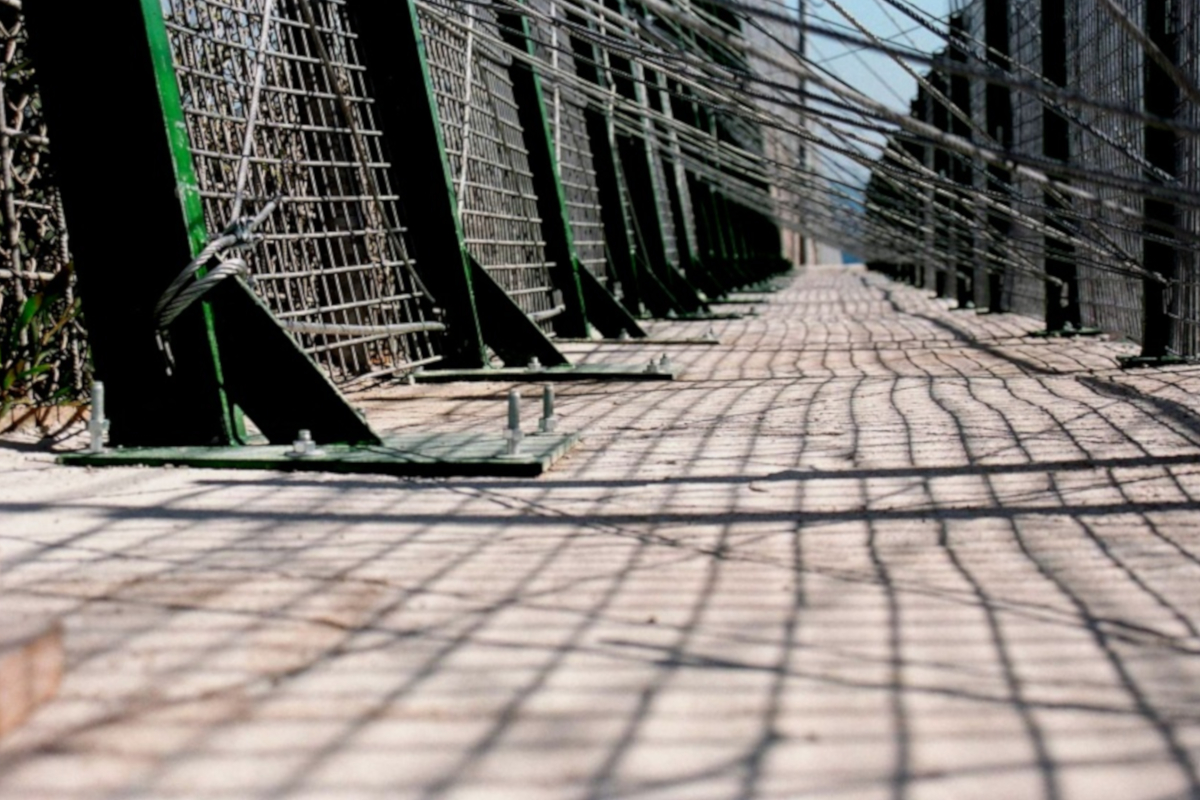
The Melilla border deaths represent a new phase in the bloody story of Fortress Europe
On 24 June dozens of people died after attempting to cross the heavily-fortified border from Morocco into the Spanish enclave of Melilla. A report by the Nador branch of the Association Marocain des Droits Humains (AMDH), summarised and built upon here, examines the build-up to and immediate aftermath of the deadly incident. The report documents multiple human rights violations and also reveals a significant shift: from EU authorities undertaking pushbacks and leaving people to their fate in situations in which they may come to harm, to EU authorities undertaking pushbacks with the explicit knowledge that they would be beaten and treated in an inhumane and degrading manner by their non-EU ‘partners’.
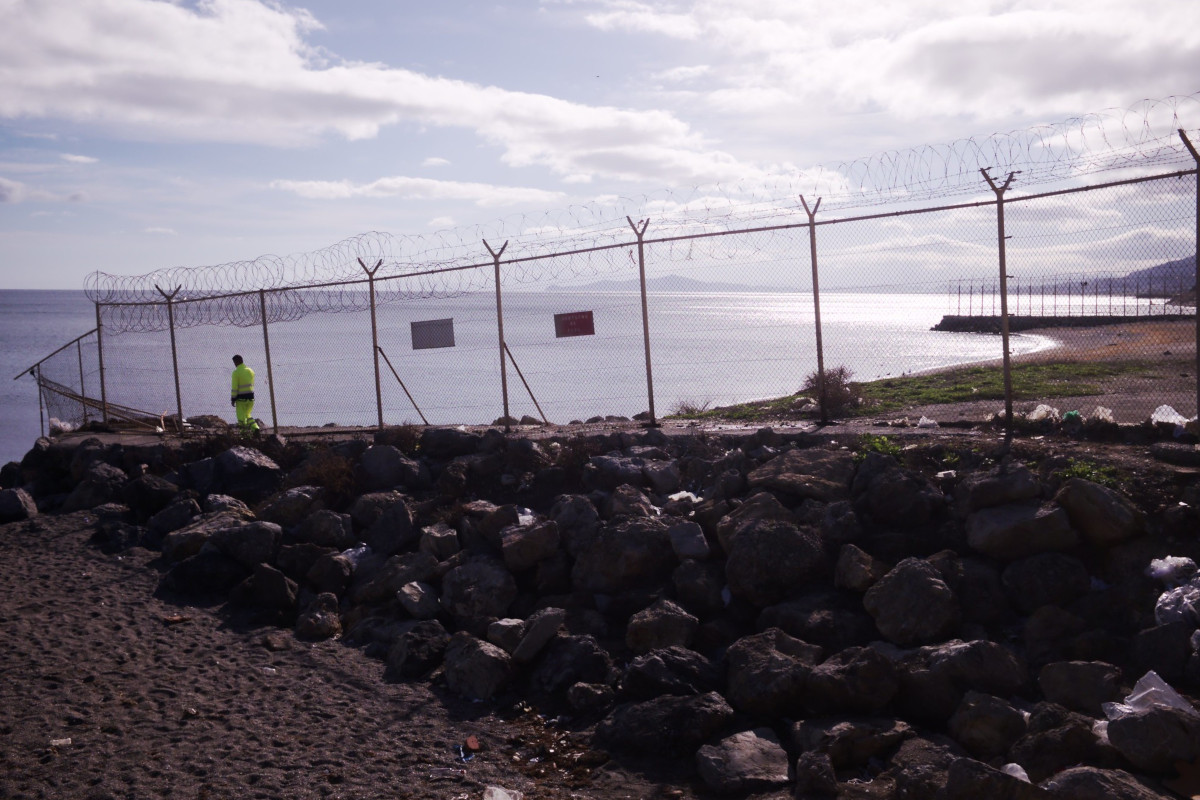
Spain and Morocco renew security cooperation agreement linking organised crime and "irregular" immigration
Translation of a statement published by Migreurop and EuroMed Rights regarding the recent agreement between Spain and Morocco, which "anchors migration in a logic of securitisation, which can only lead to more rights violations at the borders." Statewatch is a member of Migreurop.
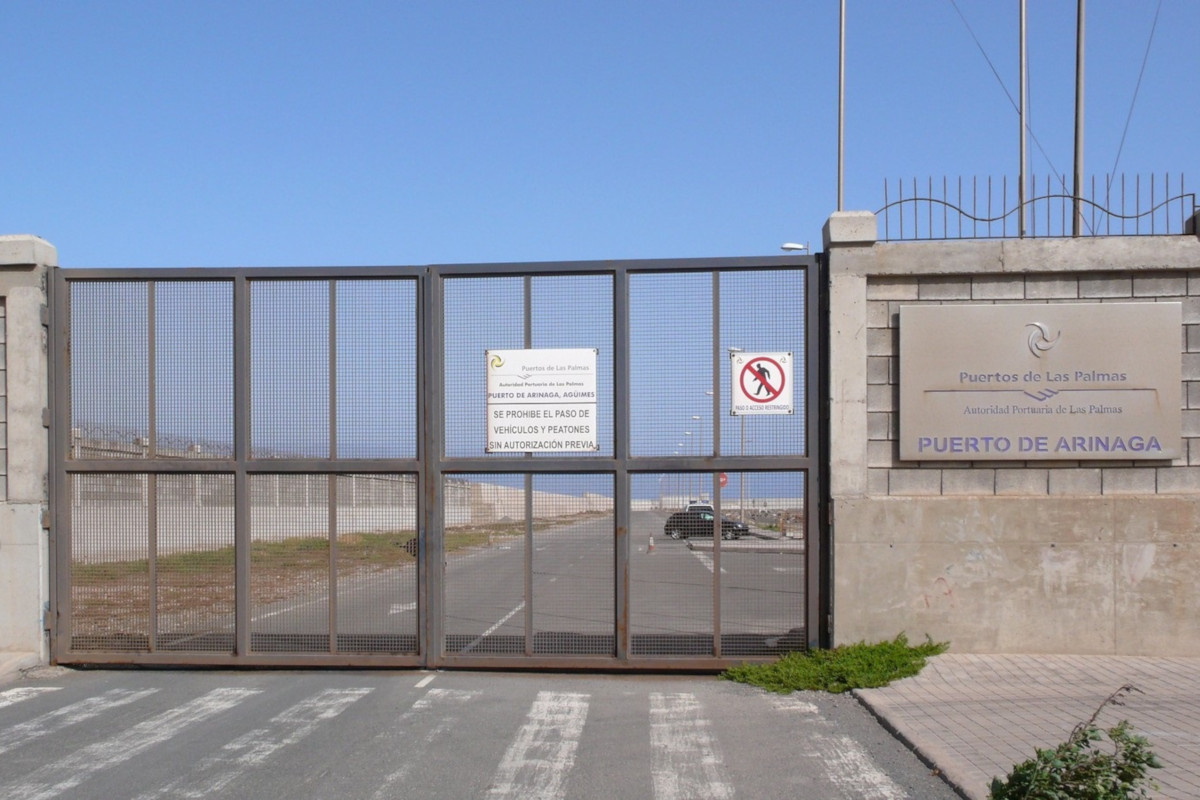
The Canary cage: the making of deportation islands on Spain’s Atlantic border
In line with concerning recent EU border control proposals, a deliberate policy of inhumane detention, illegal mobility restrictions and an overreliance on deportation ‘solutions’ is converting the Canary Islands into makeshift deportation waiting rooms and a black hole for human rights.
Spotted an error? If you've spotted a problem with this page, just click once to let us know.
